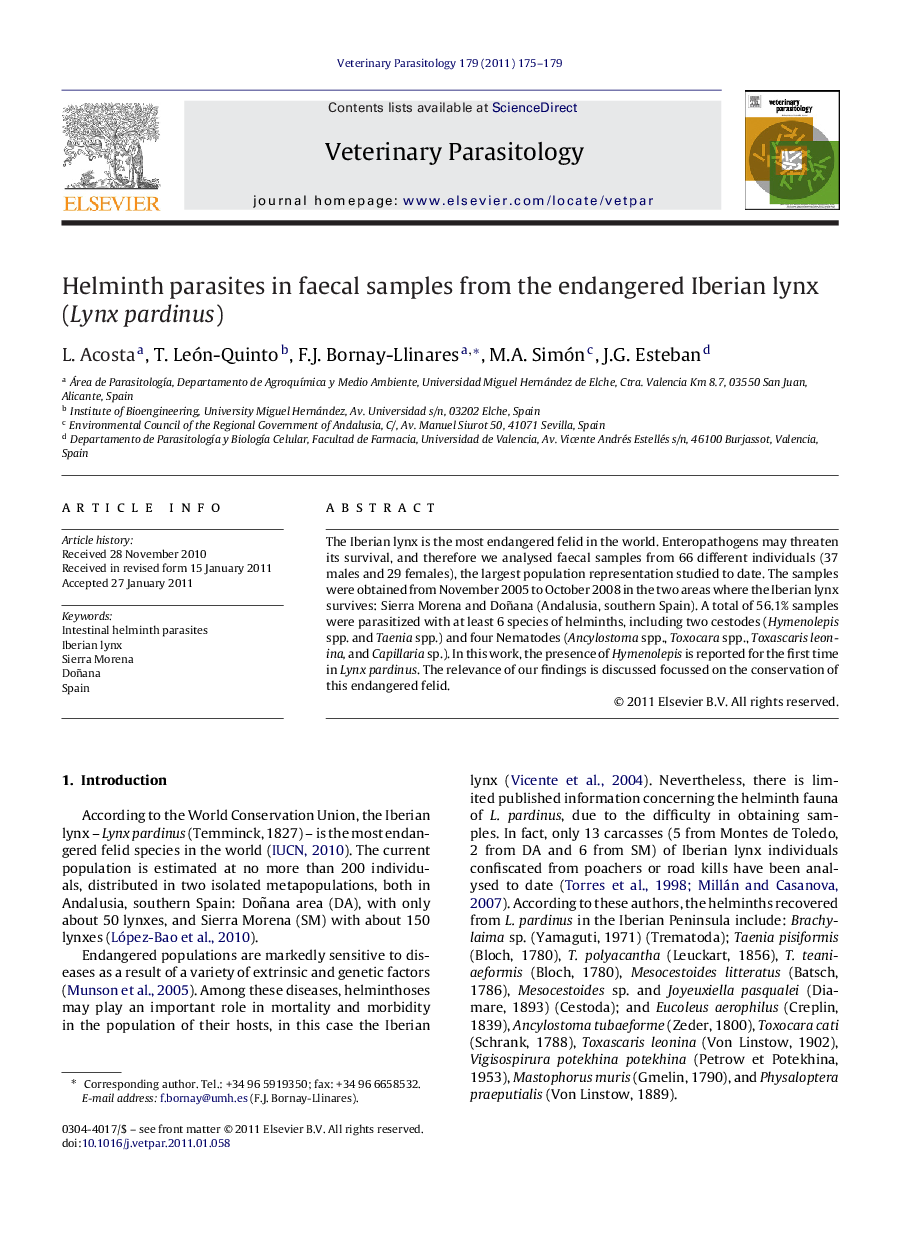| Article ID | Journal | Published Year | Pages | File Type |
|---|---|---|---|---|
| 2470267 | Veterinary Parasitology | 2011 | 5 Pages |
The Iberian lynx is the most endangered felid in the world. Enteropathogens may threaten its survival, and therefore we analysed faecal samples from 66 different individuals (37 males and 29 females), the largest population representation studied to date. The samples were obtained from November 2005 to October 2008 in the two areas where the Iberian lynx survives: Sierra Morena and Doñana (Andalusia, southern Spain). A total of 56.1% samples were parasitized with at least 6 species of helminths, including two cestodes (Hymenolepis spp. and Taenia spp.) and four Nematodes (Ancylostoma spp., Toxocara spp., Toxascaris leonina, and Capillaria sp.). In this work, the presence of Hymenolepis is reported for the first time in Lynx pardinus. The relevance of our findings is discussed focussed on the conservation of this endangered felid.
